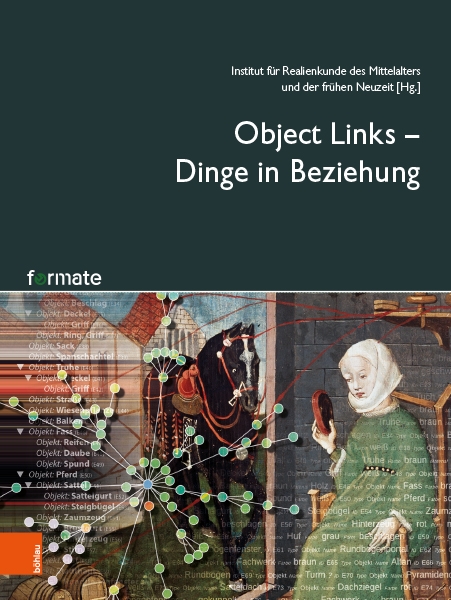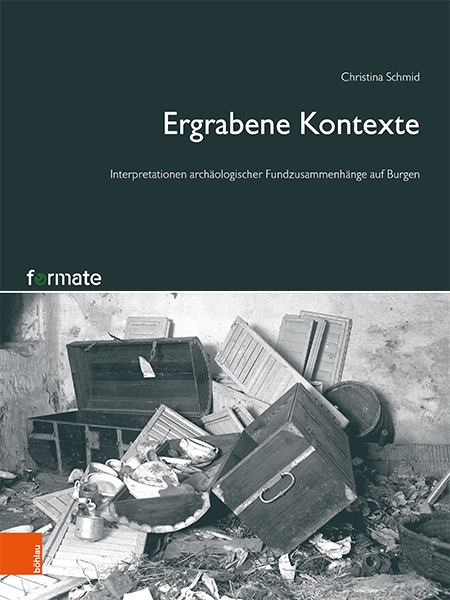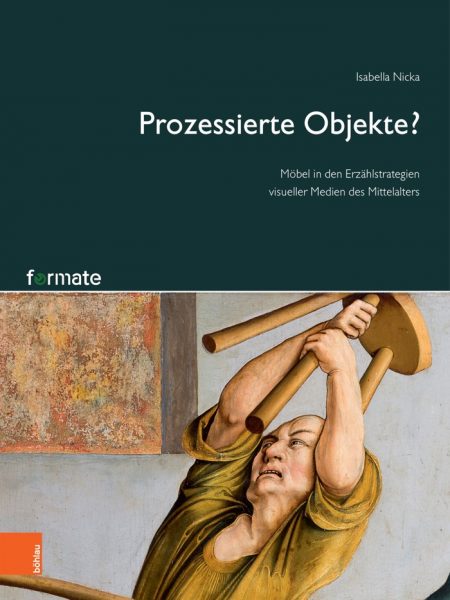
- Home
- formate
formate – Forschungen zur Materiellen Kultur



formate – Forschungen zur Materiellen Kultur is published by Böhlau-Verlag.
The series formate – Forschungen zur Materiellen Kultur (Studies in Material Culture) is a medium for methodologically groundbreaking research on material culture, published by the Institute for Medieval and Early Modern Material Culture (IMAREAL). As a publication platform for research in various fields of cultural studies, formate aims to present text and image as equivalent information media in a flexible large format and high print quality.
formate has an interdisciplinary scope: its volumes are either collections of papers from various disciplines adopting innovative methods, or monographs coming from individual disciplines with a distinct potential for connecting cultural studies discourse across disciplinary boundaries.
Formate – Forschungen zur Materiellen Kultur 1
Object Links – Dinge in Beziehung
Edited by the Institute for Medieval and Early Modern Material Culture (IMAREAL)
What insights can be gained from research that looks at the connections between objects and between objects and people? Answers to this question can be found in the first volume of the series formate. In seven individual studies from the fields of archaeology, German literary studies, history and art history, the scholars at the Institute for Medieval and Early Modern Material Culture (IMAREAL) examine the types and qualities of connections between people and objects and among objects in specific “object communities". Together the contributions show that, although the connections in various medieval and early modern object communities are manifold, their in-depth analysis is a fruitful interdisciplinary approach to material culture. In terms of methods and concepts, the book therefore is a contribution to the Object Turn in the cultural studies.
Formate – Forschungen zur Materiellen Kultur 2
Ergrabene Kontexte.
Interpretationen archäologischer Fundzusammenhänge auf Burgen
(Excavated Contexts. Interpretations of archaeological finding complexes in castles)
Christina Schmid
This study shows the potential of an analysis of archaeological finding contexts: spatial and social contextualizations provide revealing insights into the complex material cultures of aristocratic households and into the contemporary use of castle sites.
Easily modifiable, non-stationary elements of interior design – most of which have been preserved in the form of archaeological finds – represent an important source for the functional analysis of spaces. The interpretation of the interplay of architectural and archaeological traces is of particular potential for the investigation of room functions and furnishing patterns in aristocratic estates. The focus of this investigation is therefore on the conditions of deposition, the contexts of use and the references to objects, persons or spaces that can be derived from archaeological finding contexts.
Formate – Forschungen zur Materiellen Kultur 3
The Processing of Objects?
Furniture in the Strategies of the Pictorial Narrative in Medieval Visual Media
Isabella Nicka
Furniture in pictures is not something you can sit on. But they are involved as pictorial elements in the narrative strategies of visual media of the Middle Ages. The book examines the different functions they fulfil in the context of four art-historical case studies.
Understanding medieval visual media as configured semantic networks, each component, its positioning and design, is significant for conveying content to recipients. Depicted furniture – like other objects – is processed in the course of this generation of meaning in the image. The analyses in the book show how furniture is used as a media-specific instance to make emotions and abstract ideas, characterisations of figures and actions as well as temporal sequences in narratives comprehensible in medieval images. It also reflects on the potentials of digital art history for the study of this represented object category and the reasons why only selected aspects on the topic have been studied so far.